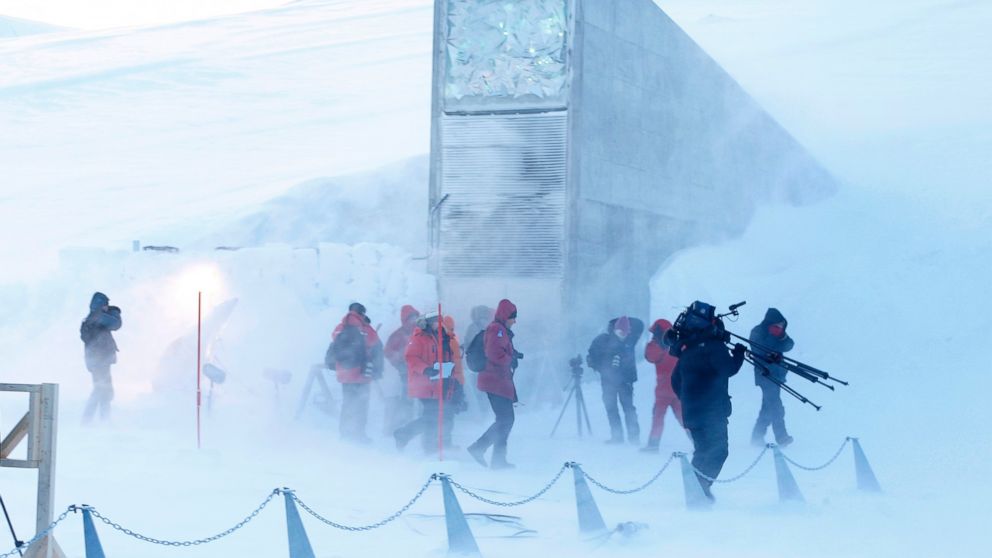Norway's Seed Vault Opens Its Doors to Save Syrian Crops
It has been asked to open its doors once again.

— -- The world's only known "seed vault" tucked away in the Norwegian Arctic will open its doors for the first time, after scientists made a plea to save Syrian crops.
The International Center for Agricultural Research in the Dry Areas, previously located in Aleppo, Syria, has made a request to the "Svalbard Global Seed Vault" to send back some seeds in order for them to increase yields which are threatened by drought -and war.
“The collection holds some of the world’s most important diversity of Wheat, Barley, Grasspea and other crops," the group -- now located in Beirut, Lebanon -- said in a statement, adding that "this diversity provides our scientists, breeders and farmers the raw material needed to improve agriculture to overcome the challenges of climatic changes, population growth, pests, and diseases.”
The Svalbard vault, located about 800 miles from the North Pole, opened in 2008 and contains seeds from tens of thousands of varieties of essential food crops such as beans, wheat and rice.
It's official purpose is to service to the world community but many say it was created as a safeguard in the event of a nuclear war of worldwide catastrophe.
Located 393.7 feet into the rock, the rooms remain naturally frozen “even in the event of failure of the mechanical cooling system and rising external air temperatures due to climate change," according to the international non-profit Crop Trust.
Syria has been suffering a drought for years, a March 2015 study from Proceedings of the National Academy of Sciences reports, starting in 2006 and culminating in 2009.




